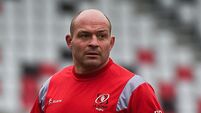Gender hurdle for race champ
JACOB SEMENYA doesn’t care what anyone thinks, be they runners, athlete officials, sports commentators, gender specialists or newspapers. As far as he is concerned, Caster is his little girl.
He watched the South African athlete realise a lifelong dream by winning the Women’s 800m at the 2009 World Athletics championships in Berlin and, no matter what anyone says, he believes she deserves to savour every moment of her dramatic victory.
Semenya ascended the podium to receive her gold medal and her father could not have been prouder.
But the doubts remain. Semenya’s dramatic improvement, muscular build and deep voice sparked speculation about her gender.
Scientists are working on a sample of cellular matter donated through a cheek swab, and are looking at chromosomal and hormonal patterns. According to sport by-laws, the panel would include an endocrinologist, a psychologist and others.
There have been instances of outright deception, as well as more ambiguous cases in which athletes classified as women have lived their whole lives with male chromosomal material that they weren’t aware of.
The most notorious gender mystery in sports may be that of Stella Walsh, the Polish sprinter who won several Olympic gold medals in the 1930s. After Walsh was killed in 1980, an autopsy revealed she possessed both male and female genitalia.
The International Olympic Committee (IOC) dropped gender testing before the 2000 Olympics because it became controversial. In explaining their reason for dropping the test, the IOC said not all women have standard female chromosomes. There are also cases of people who have ambiguous genitalia and congenital conditions.
Semenya has no shortage of defenders, though, at least on her home turf. “She said to me she doesn’t see what the big deal is all about,” says South Africa team manager Phiwe Mlangeni-Tsholetsane. “She believes it is God-given talent and she will exercise it.”
Less than a month ago, giving a new meaning to the term “governing body”, the International Association of Athletics Federations asked the South African Athletics Federation to conduct a gender test after Semenya burst onto the scene by posting a world leading time of 1 minute, 56.72 seconds at the African junior championships in Bambous, Mauritius, seven seconds faster than her previous best.
In Berlin, Semenya did even better, finishing in 1 minute, 55.45 seconds, the best time in the world this year.
Results won’t be available for several weeks.
But, despite doubts about Caster Semenya’s achievements in Berlin, her father, Jacob, rose to her defence: “She is my little girl. ... I raised her and I have never doubted her gender. She is a woman and I can repeat that a million times,” he told a South African newspaper. Semenya’s paternal grandmother, Maputhi Sekgala, said the controversy “doesn’t bother me that much because I know she’s a woman”.
“What can I do when they call her a man, when she’s really not a man? It is God who made her look that way,” Sekgala told the South African newspaper, The Times.
South African athletics federation president Leonard Chuene insists that Semenya is facing intense scrutiny because she is African. “It would not be like that if it were some young girl from Europe,” he says. “If it was a white child, she would be sitting somewhere with a psychologist, but this is an African child.”
It is not the first time, though, that Semenya has faced confusion about her gender. “She was always rough and played with the boys,” according to the headmaster at her school. “She liked soccer and wore pants to school. She never wore a dress. It was only in Grade 11 that I realised she is a girl.”
WALSH set more than 100 national and world records during a distinguished career which included winning sprint gold at the 1932 Los Angeles Olympics and silver at the 1936 Berlin Games.
When Walsh was killed in 1980, after being caught up in an armed robbery of a department store in Cleveland, Ohio, confusion mounted. An autopsy revealed she had both male and female genitalia, which immediately put in question the validity of her athletics achievements.
The examination revealed that Walsh suffered from a condition called mosaicism, which meant she had both male and female chromosomes.
KLOBUKOWSKA was a double medallist at the 1964 Tokyo Olympics and broke the women’s 100m world record in 1965. But she was banned from all professional sport in 1967 after becoming the first athlete to fail a chromosome test.
RATJEN disguised himself as a woman by tightly binding his genitals to his body while competing in the women’s high jump at the 1936 Berlin Olympics. Ratjen finished fourth in the competition, and later set a world record at the European Championships in 1938. But despite wearing a dress, Ratjen was revealed as a man after two athletics fans spotted him with facial hair at a train station in Germany. Ratjen later claimed the Nazi regime had forced him to compete as a woman.
THE Press sisters won five track and field Olympic gold medals for the Soviet Union and set 26 world records inthe 1960s. Their gender was the subject of debate, heightened by their disappearance following the introduction of compulsory gender testing in 1966.
Tamara won the gold medal in the shot put, setting a new Olympic record for the event during the Rome Olympics, on September 3, 1960.














